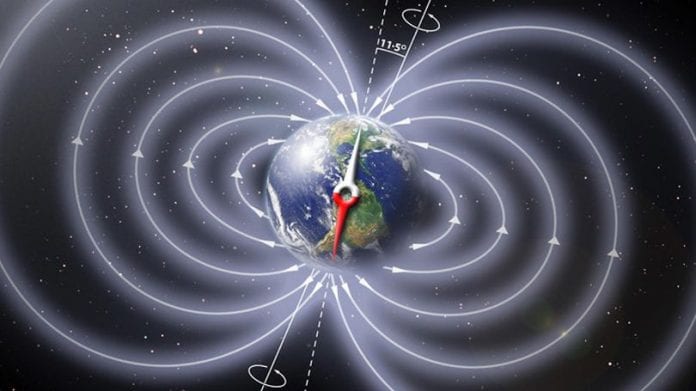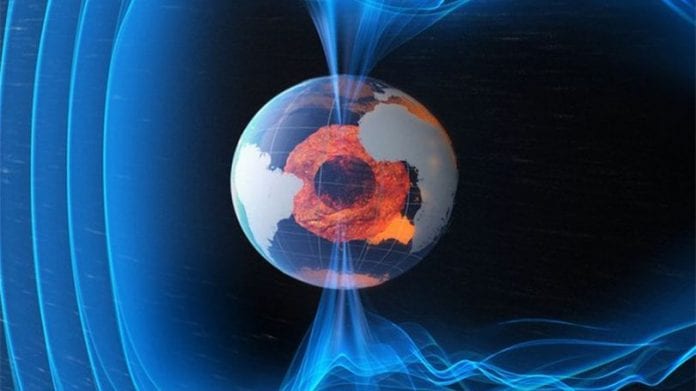If you could go back to the past, around 41.000 years to be precise, when the last ice age occurred, you would notice that your compass wouldn’t show North where you expect it to be. It would point down to South, and the reason for that is the Earth’s magnetic field reversion.
These trades occur frequently and sometimes last for thousands of years, and we know that thanks to the formation of magnetic minerals, which we can find in the soil. There are a number of ideas that explain why this happens. According to one of them, the upper layers of the Earth’s core act like a giant lava lamp in which the mass of molten iron and nickel alternately raises and lowers and change comes because of that movement. This theory comes from Paula Koelemeijer, Junior Research Fellow at the Department of Global Seismology, University of Oxford, as its written by “Huffington post.” About 1.864 miles below our feet, at a depth of 270 times greater than the deepest point of the ocean, the Earth’s core begins. It’s a liquid sphere made of iron and nickel, whose upper layers reaches a temperature of almost 7,232 degrees Fahrenheit and the pressure is 1.3 million times greater than on the Earth’s surface.

Flows of molten rocks shift tectonic plates for millions of years, and due to that the continents move and change their shape. The movement of molten metal in the core creates and maintains the magnetic field that shields the earth from harmful radiation from space that would eventually ruin the atmosphere. Since it is so deep, the main way to study the boundary between the core and the upper layer is to monitor the seismic signals which generate earthquakes. Using the information that shows the form and the speed of seismic waves, we can discover through which parts of the globe they have traveled in that form in order to reach us. After a particularly strong earthquake, the entire planet vibrates like a bell, and the measurement of these oscillations at different places can reveal what kind of structure is in some part of the globe.
Using this method, scientists have discovered that there are two great areas of the core through which seismic waves move slower in relation to the environment. Each of these areas would be 100 times higher than Mount Everest if by any chance they were on the surface. These regions have a significant impact on the dynamics of the Earth’s crust and influence the flow in the inner part of the core.

From a number of the most destructive earthquakes in the last decades, something good actually has stemmed. Thanks to them scientists were able to measure special kind of seismic oscillations, which move along the border of the core and mantle and are known as Stoneley waves. By studying these waves, it has been discovered that the said two regions have a lower density while closer to the core, compared with other materials. Of course, lower density could be attributed to the fact that these areas are warmer when closer to the core, but the exciting possibility is that due to the special composition these areas behave like bubbles in a lava lamp. This means that periodically they raise to the upper layers, cool down and again fall to the core.
Such behavior could explain why the Earth’s magnetic field occasionally reverses. The fact that the field has changed so many times in Earth’s history suggests that there was a number of changes to the internal structure. We know that the core has mountains and valleys just like the Earth’s surface and by studying this “topography” we may be able to produce detailed maps of the core, which will give us a much better insight into what is happening beneath our feet.









